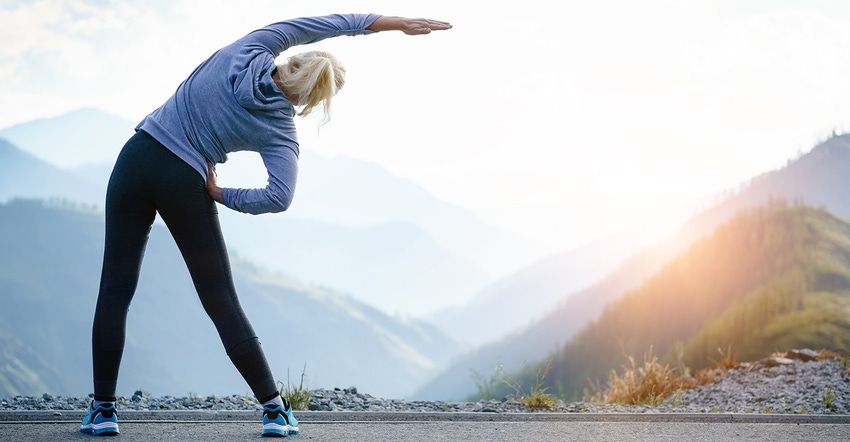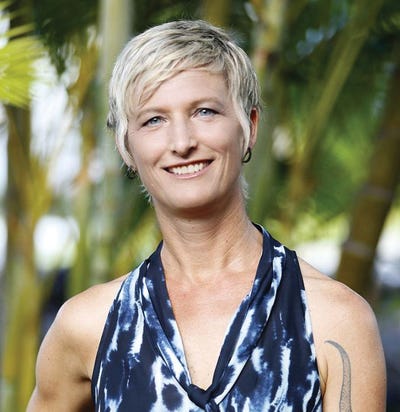Antioxidants like astaxanthin work to defend the body against oxidation, which can lead to inflammation and injury after exercise.

Insider Takes
Antioxidants like astaxanthin work to defend the body against oxidation, which can lead to inflammation and injury after exercise.
A study on astaxanthin reported more relative antioxidant activity than the catechins in green tea, beta carotene and curcumin.
Astaxanthin produced by the microalgae Haematococcus pluvialis is most commonly available in softgels, and recently, RTDs.
Many people have responded to the upheaval and disruption of their lives caused by the COVID-19 pandemic by taking up hobbies and committing to new exercise resolutions. Whether streaming online indoor cycling classes on a Peloton while learning a foreign language or redefining one’s body in a resistance lap pool in the garage, transformation has been a hallmark of 2020.
Some consumers have learned that they can swim, not sink and even charge upstream like a mighty salmon. They may also have learned that their body needs support to recover from all of the newfound athletic endeavors. Ironically, salmon have the solution for (and source of) the perfect nutrient that can help support the human body’s recovery from exercise. These incredibly strong fish migrate miles upstream to consume shrimp-like krill, which themselves feed on algae that contain the powerful antioxidant astaxanthin. This nutrient finds its way through the food chain to the salmon, turning the fishes’ flesh pink and helping them stave off oxidative stress—ultimately supporting their muscles as they swim.
In a comparative study, astaxanthin reported more relative antioxidant activity than the catechins in green tea, beta carotene and even curcumin—the strong antioxidant in turmeric. Astaxanthin exhibited the most potent oxygen-quenching activity compared to these and 23 other antioxidant and polyphenolic compounds tested in the study.1
Antioxidants like astaxanthin work to defend the body against oxidation, which can lead to inflammation and injury after exercise. When exercising, the muscles fire and the cells produce free radicals and other reactive oxygen species (ROS) that create stress and inflammation that can damage the muscle tissues. Astaxanthin naturally quenches these free radicals, preventing them from a cascade of disruption in the body. A bevy of clinical research supports this process and the potential of astaxanthin in sports nutrition formulations.
In just three weeks, weightlifters taking 4 mg of Haematococcus pluvialis microalgae-derived astaxanthin in a double-blind, placebo-controlled study reported a statistically significant reduction (p <0.05) in muscle soreness when compared to the control group.2 And in another study, over four weeks, participants supplementing with 5 mg of Haematococcus pluvialis-derived astaxanthin reported a higher recovery rate than the control group in an exercise stress test.3
In addition to minimizing soreness and recovery time, supplementing with astaxanthin may also help improve strength.4 Over an eight-week period, in a double-blind, placebo-controlled study, tennis players who took 4 mg of Haematococcus pluvialis-derived astaxanthin reported an improvement in their grip strength. This may have been due to a reduction in inflammation, as noted by a statistically significant difference in C-reactive protein (CRP) levels between the supplement group and the control group (p <0.05). The body makes CRP in response to exercise-induced inflammation. Therefore, taking an astaxanthin supplement may reduce CRP and possibly lower inflammation levels in the body after exercise.
Astaxanthin was also shown to be effective for the improvement of strength endurance in a double-blind placebo-controlled study consisting of 40 participants.5 The group supplementing with 4 mg of Haematococcus pluvialis-derived astaxanthin over a six-month period reported an increase in the average number of squats completed in strength training, as compared to the control group. Those who took astaxanthin could squat three times more than the control group who did not take the supplement.
In 2012, a double-blind placebo-controlled study reported that 32 elite male soccer players taking astaxanthin had less oxidative stress after exercise.6 Taking astaxanthin appeared to be reducing free radical production and thus mitigated oxidative stress in these athletes. Intense and sustained physical activity elevates the generation of free radicals and ROS. This elevation creates an imbalance of oxygen species and antioxidants present in the body. The imbalance can cause oxidative stress, inflammation and damage to cells, tissues and proteins, including DNA.
Based in Belgrade, Serbia, these scientists went on to conduct a second study in 2015.7 Forty young elite male soccer players supplemented with a placebo or 4 mg astaxanthin per day for the duration of their three-month soccer season. Physiological stress was induced by the physical activity over the season. This stress was measured in terms of oxidation or pro-oxidant-antioxidant balance (PAB), muscle injury or creatine kinase (CK) enzyme activity at baseline and after 90 days of supplementation. Inflammatory measurements consisted of total leukocytes, neutrophil count and CRP levels.
A significant decrease in PAB occurred in the astaxanthin group after 90 days in comparison to baseline values (p< 0.50). No significant changes were found in the placebo group. This decrease in PAB in the athletes taking astaxanthin should ultimately reduce the deleterious effects of inflammatory ROS generated during their season.
Additionally, after 90 days of regular soccer training, a 57% increase in CRP levels was observed in the placebo group, but not in the astaxanthin group—indicating the presence of more inflammation in the athletes that did not take the astaxanthin supplement. Analysis of variance (ANOVA) also showed a significant increase in leukocyte count in the placebo group (p<0.05) but not in the astaxanthin group. And a significant increase in neutrophil count in the placebo group after 90 days (p<0.01) was observed. These changes were not detected in the supplemented group. Lastly, a significant decrease in CK enzyme activity was noted in the astaxanthin group after 90 days compared to baseline values (p<0.01), while a decrease in the placebo group was not significant.
The results collectively indicated less muscle injury or damage to the tissues was recorded in the athletes that took astaxanthin. This attenuation of muscle damage is likely due to a restoration of oxidative balance that minimized inflammation induced by the athlete’s rigorous physical exercise. The increases in inflammatory markers only seen in the placebo group also supports astaxanthin’s ability to curb the effects of exercise-induced inflammation.
The research on astaxanthin over the years consistently points to its potential importance as a nutrient for sports nutrition and recovery. Athletes can get astaxanthin from a combination of eating a lot of salmon and supplementing. Natural astaxanthin produced by the microalgae Haematococcus pluvialis is most commonly available in 4 to 12 mg softgel dietary supplements, and more recently is available in ready-to-drink (RTD) sports beverages for inspired consumers.
Jen Johansen, vice president of quality, regulatory and government affairs, Cyanotech Corp., has 15 years of experience in quality and regulatory, and is a member of the Regulatory Affairs Professional Society, is an American Society of Quality certified HACCP auditor, and is a preventive controls qualified individual (PCQI). Johansen is the chairwoman for the Hawaii State Chapter of United Natural Products Alliance (UNPA) and is on the Kona Kohala Chamber of Commerce Economic Development Committee and Sustainability Committee.
References
1 Nishida Y, Yamashita E, Miki W. “Quenching activities of common hydrophilic and lipophilic antioxidants against singlet oxygen using chemiluminescence detection system.” Carotenoid Science. 2007;11:16-20.
2 Fry AC. “Astaxanthin for Delayed Onset Muscular Soreness.” University of Memphis Exercise Biochemistry Laboratory. 2001.
3 Nagata N, Tajima T, Takahashi J. “Effects of Astaxanthin 5mg on Anti-Fatigue and Task-Performance of Human.” Carotenoid Science. 2006;10.
4 Spiller et al. “Effect of daily use natural astaxanthin on C-reactive protein.” Health Research & Studies Center. Los Altos, CA. 2006.
5 Malmsten C, Lignell A. “Dietary Supplementation with Astaxanthin-Rich Algal Meal Improves Strength Endurance – A Double Blind Placebo Controlled Study on Male Students.” Carotenoid Science. 2008;13.
6 Djordjevic B et al. “Effect of Astaxanthin Supplementation on Muscle Damage and Oxidative Stress Markers in Elite Young Soccer Players.” J Sports Med Phys Fitness. 2012;52:382-392.
7 Baralic I. “Effect of Astaxanthin Supplementation on Salivary IgA, Oxidative Stress, and Inflammation in Young Soccer Players.” Evid Based Complement Alternat Med. 2015;783761.
About the Author(s)
You May Also Like






.png?width=800&auto=webp&quality=80&disable=upscale)